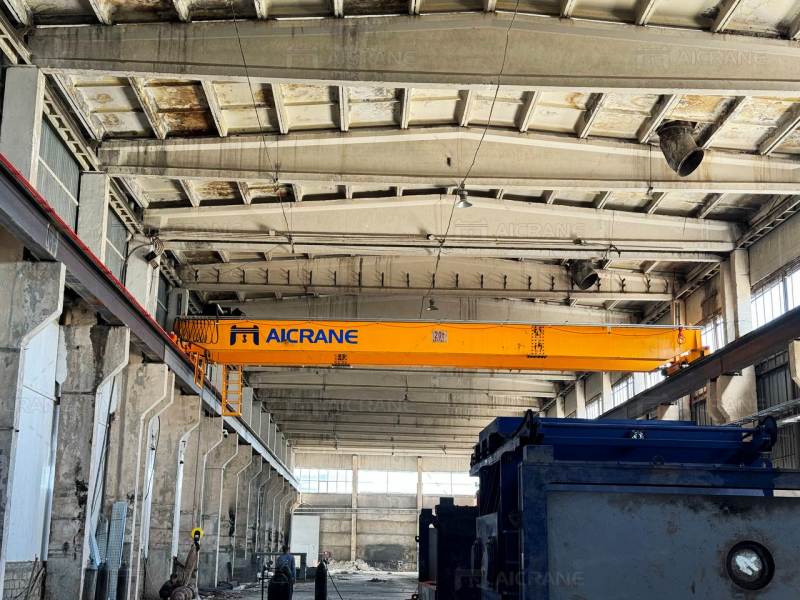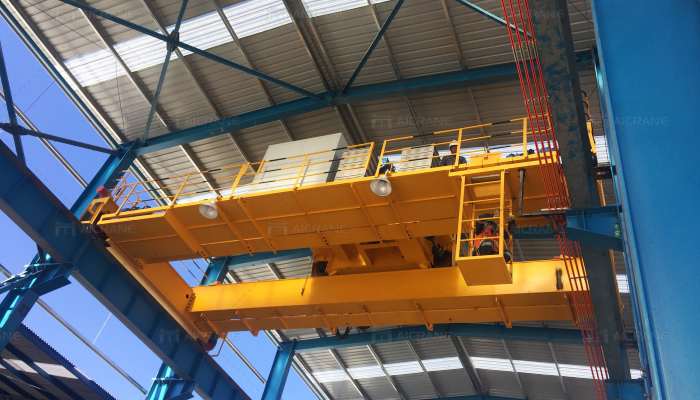Top running double girder cranes are essential components in various industrial settings, providing efficient lifting solutions for heavy materials and equipment. However, operating such cranes comes with a set of responsibilities, particularly in terms of regulatory compliance. Ensuring that these cranes meet safety and operational standards is crucial not only for the protection of workers and equipment but also for maintaining legal and operational integrity. This article delves into the regulatory compliance requirements associated with top running double girder cranes, covering standards, inspections, certifications, and best practices.

Overview of Top Running Double Girder Cranes
Top running double girder cranes consist of two parallel girders supported by end trucks that run along elevated tracks. This design offers several advantages, including higher lifting capacities, improved stability, and greater hook height compared to single girder cranes. Due to these features, they are widely used in warehouses, manufacturing plants, and construction sites.
However, the complexity and weight of these cranes necessitate strict compliance with safety regulations and industry standards to prevent accidents and ensure optimal performance.
Key Regulatory Bodies and Standards
Understanding the regulatory framework governing the operation of top running double girder cranes involves familiarizing oneself with the key regulatory bodies and standards. These include:
- Occupational Safety and Health Administration (OSHA): In the United States, OSHA sets and enforces standards for workplace safety, including those related to crane operations. Employers must comply with OSHA regulations to ensure safe working conditions and prevent accidents.
- American National Standards Institute (ANSI): ANSI develops standards related to industrial bridge cranes and hoists, specifically ANSI/ASME B30.2, which covers overhead and gantry cranes. Compliance with ANSI standards is crucial for ensuring the safe design and operation of top running double girder cranes.
- Crane Manufacturers Association of America (CMAA): The CMAA provides guidelines and recommendations for crane manufacturing and operation, including specifications for top running cranes. Following CMAA standards helps ensure that cranes are designed and operated safely and effectively.
- International Organization for Standardization (ISO): ISO standards, such as ISO 4301, address the safety requirements for cranes and lifting equipment. Compliance with these international standards is particularly important for companies operating globally.

Safety Regulations and Requirements
To ensure compliance with regulatory standards, operators of top running double girder cranes must adhere to a range of safety regulations, including:
- Operator Training and Certification: All crane operators must undergo proper training and obtain certification. Training programs should cover safe operating practices, load handling, and emergency procedures. Regular re-certification is also essential to keep operators updated on safety protocols and regulatory changes.
- Regular Inspections and Maintenance: Compliance with regulatory requirements necessitates regular inspections and maintenance of top running double girder cranes. Inspections should be conducted by qualified personnel to identify potential hazards and ensure that all components are functioning correctly. Following the manufacturer’s maintenance schedule and keeping detailed records of inspections and repairs are crucial for compliance.
- Load Capacity Limits: Operators must strictly adhere to the specified load capacity limits of the crane. Overloading can lead to accidents and equipment failure, resulting in injuries and costly damage. It is essential to have proper load indicators or limit switches installed on the crane to prevent overloading.
Documentation and Record-Keeping
Maintaining comprehensive documentation is vital for regulatory compliance. This includes:
- Inspection Records: Detailed records of all inspections, maintenance activities, and repairs should be maintained. These records serve as proof of compliance during audits and can be crucial in the event of an accident.
- Training Documentation: Keeping records of operator training and certifications is essential for demonstrating compliance with safety regulations. Employers should also document any ongoing training or refresher courses attended by crane operators.
- Safety Procedures and Protocols: Companies should have written safety procedures and protocols in place for crane operations. These documents should outline the steps to be followed during lifting operations, emergency procedures, and protocols for reporting safety violations.
To choose a quality and suitable overhead crane to lifting heavy materials, it is important to select one from a reliable supplier, like Aicrane, and reliable suppliers usually provide efficient cranes to suit different lifting needs.
Best Practices for Compliance
To enhance regulatory compliance and ensure safe operations, companies should implement best practices such as:
- Regularly Reviewing Regulations: Stay updated on changes in local, state, and federal regulations related to crane operations. Compliance requirements may evolve, and businesses must adapt to remain compliant.
- Conducting Safety Audits: Regular safety audits can help identify potential areas of non-compliance and areas for improvement. These audits should assess training programs, equipment maintenance, and operational procedures.
- Promoting a Safety Culture: Fostering a safety culture within the organization encourages employees to prioritize safety and compliance. Employees should feel empowered to report safety concerns and participate in safety training initiatives.
Summary
Regulatory compliance is a critical aspect of operating top running double girder cranes. By understanding and adhering to the relevant regulations, companies can ensure the safety of their workers, protect their investments, and minimize liability. Compliance not only enhances operational efficiency but also contributes to a safer work environment.
By prioritizing safety training, maintaining thorough documentation, and regularly reviewing and updating compliance practices, organizations can navigate the complexities of regulatory requirements effectively. As the landscape of crane operations continues to evolve, staying informed and proactive in compliance efforts will be essential for the success of businesses utilizing top running double girder cranes.